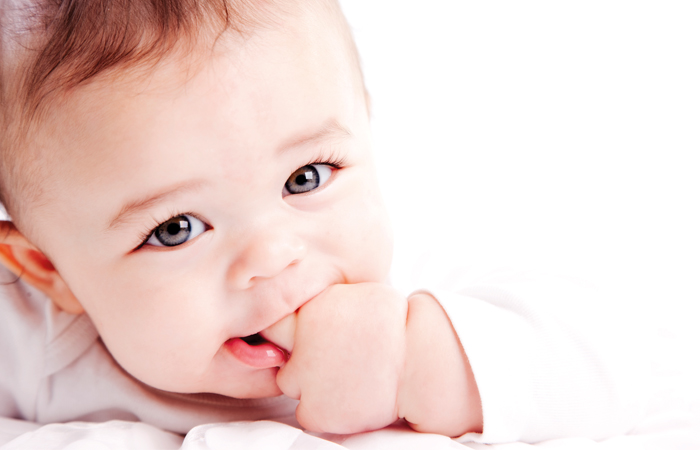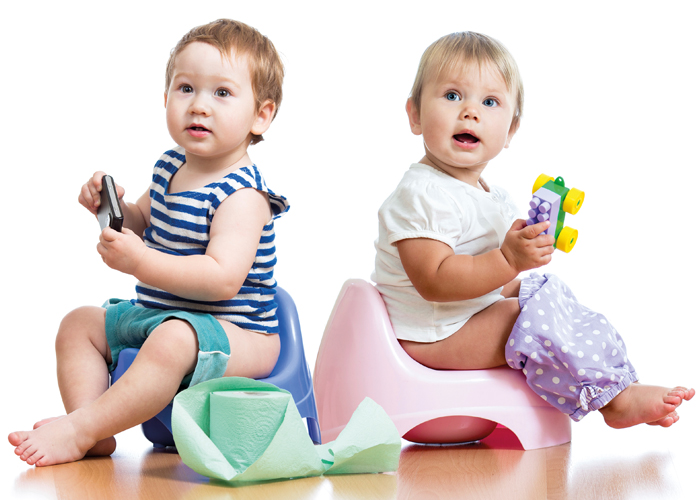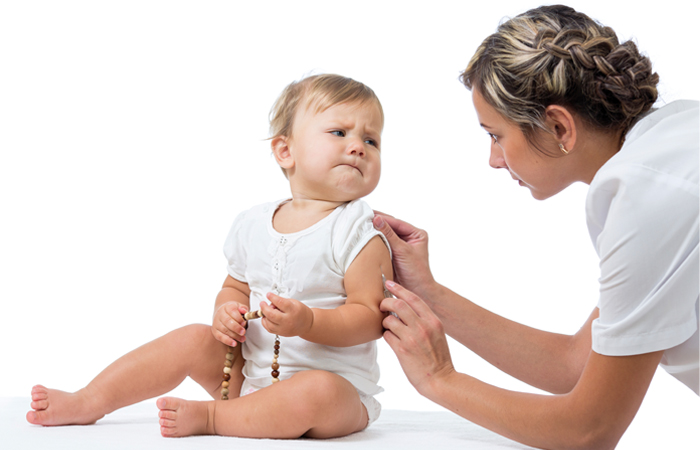Preschool predicaments
In Conditions
Follow this topic
Bookmark
Record learning outcomes
Reassuring new parents when their baby is poorly and helping them choose appropriate treatments can be tricky. But with advice from the experts, pharmacy teams can confidently provide answers to some of the most common concerns
Becoming a new parent is as terrifying as it is exciting, and it’s normal for parents to feel anxious whenever their baby doesn’t seem quite themselves. Here are some of the most common questions new parents might ask, as well as the signs that indicate a baby needs medical referral.

Q: “My five-month-old baby is dribbling a lot, is unsettled at night and has a red cheek. Could he be teething and what can I do to soothe him?”
A: This is the typical age for first teeth to appear and it’s normal for just one cheek to be flushed. Parents may also notice their baby chews on things a lot and seems irritable.
If a baby seems in pain or has a high temperature (between 36.4°C and 38°C), they can be given a dose of children’s analgesic. A teething gel with a local anaesthetic can help ease discomfort, as can chewing on something, such as a cooled teething ring.
If a baby has a fever – over 38°C – or diarrhoea, this is not caused by teething and parents should seek medical help.
Q: “My two-month-old daughter cries for hours each evening, won’t feed during this time, seems in pain and draws her knees up. What could be wrong?”
A: This could be colic, which is defined as bouts of irritability, crying or fussing for more than three hours a day, on more than three days a week. It affects about three in 10 babies and normally resolves itself around three to four months of age.
Unfortunately, there is no one cure or treatment for colic. Parents can try holding their baby during a crying episode, gently rocking baby over their shoulder, bathing baby in a warm bath and gently massaging baby’s tummy.
With regards to feeding, parents should try to hold their baby upright during a feed to prevent them from swallowing air and burp their baby after each feed. Specialist formula milks are also available for formula-fed babies or drops can be added to breast or formula milk to aid digestion and release any bubbles of trapped air in the baby’s digestive system.
If the baby is not thriving, parents should seek advice from a doctor.
Q: “My baby has recently switched to formula milk and has become very constipated. What can I do to help?”
A: Babies vary in how often they open their bowels and what is more important is whether passing stools is painful for them.
“Babies often do fewer poos when they switch to formula milk, but as long as they are soft and easily passed you don’t need to worry. Babies normally adapt to formula after a few days,” says baby feeding expert Clare Byam-Cook. If poos arehard and difficult to pass, a healthcare professional may suggest giving baby extra water or a little prune, apple or pear juice in between feeds for a few days, says Clare, or they may suggest changing the infant formula milk itself to see if that helps.
Q: “The skin on my baby’s nappy area is red and inflamed. What is this and how can I treat it?”
A: This sounds like nappy rash – an inflammation of the skin caused by a reaction to urine and faeces. Parents should be advised to leave their baby’s nappy off as much as possible to let air get to the skin and change the nappy as soon as it becomes wet or dirty. Making sure the skin is dry before putting on a clean nappy and protecting skin with a barrier cream, such as zinc and castor oil, can also help. If the rash doesn’t improve, parents should be referred to their GP, who may advise a mild hydrocortisone cream for a few days.
Q: “My four-month-old baby has diarrhoea and I’m worried she will get dehydrated. Should I stop breastfeeding her until it clears up?”
A: Diarrhoea is most likely caused by a virus (e.g. rotavirus). Babies can dehydrate quickly, so plenty of fluid is essential.
Clare says that if a baby is otherwise well, pharmacy teams should advise mums to “continue breastfeeding and give extra water between feeds if you think she might be dehydrated. If your baby has dry nappies, becomes drowsy or has a fever, get medical help”. In addition, rehydration sachets may be necessary.

Q: “My eight-month-old baby feels hot and is crying a lot, but I can’t see any signs of illness. What should I do?”
A: Firstly, parents should take their baby’s temperature to see if it is a fever – 38°C or higher. A fever usually lasts up to 48 hours and means a baby has or is developing a viral infection. Babies should be given plenty to drink and parents should make sure the room is cool and that their baby is not dressed too warmly. If the baby seems distressed, they can be given infant paracetamol or ibuprofen.
Signs that a baby needs urgent medical attention include: pale skin, lips or tongue; not responding normally; being difficult to wake; listlessness; a dry mouth or lips; poor feeding; dry nappies; shivering.
Q: “My six-week-old baby is often sick after she’s had a feed. She is gaining weight but I’m worried about what this might be.”
A: “It’s quite common for breastfed babies to be sick after a feed. If they are happy, healthy and gaining weight then there’s no need to worry – baby will grow out of it. [Parents can] try sitting baby upright after each feed and give smaller, more frequent feeds. If baby stops gaining weight and is unsettled, it could be reflux,” says Clare, adding that healthcare professionals could recommend formula-fed babies try a milk designed for babies with reflux to see if that helps.
Reflux occurs when the muscle at the end of the oesophagus is too relaxed. It can be associated with cows’ milk allergy and babies will often have colic-like symptoms too.
Q: “My one-year-old has developed red, dry patches of skin on his face and scaly patches on the backs of his legs. What could this be?”
A: Around one in five children has eczema in the UK, with 80 per cent developing it by age five. It is characterised by patches of dry, sore and itchy skin, commonly on the face and skin creases in children.
“One of the main signs of eczema that sets it aside from other skin conditions is the itch as well as chronic dry skin,” explains Holly Shaw, nurse advisor at Allergy UK. “Where it is not clear what the skin rash may be, gaining an accurate diagnosis is important and it’s advisable to seek advice from a GP in the first instance.”
If it is eczema, emollients are the main treatment. They help repair the skin’s damaged barrier layer, trap moisture and relieve itchiness and should be applied daily.
In children, food allergens are a common eczema trigger, especially milk, eggs, wheat, soy and peanuts. Referral to a GP may be necessary to eliminate these.
Q: “My baby has had patches of yellow, flaky skin on her scalp since birth and they are still there three months later. What will clear it up?”
A: This sounds like seborrhoeic dermatitis, or cradle cap, a type of skin inflammation that can affect baby’s scalp and face. It normally clears itself up by around six months of age.
Cradle cap is characterised by thick, greasy, yellow patches on the scalp, which become flaky and rub off easily but are not usually itchy. Some babies also have a mild, red rash on the face, behind the ears and on their neck.
Washing hair daily with baby shampoo and brushing gently to loosen the dry skin can help. Alternatively, baby oil can be used to soften the skin before brushing gently and shampooing off.
If this doesn’t work, parents can try rubbing in olive oil, leaving it on overnight and shampooing it off the next day. If the skin becomes inflamed and sore, a GP may prescribe an antifungal cream.
Q: “My baby gets a wheezy chest each time she has a cold. Does this mean she’s likely to develop asthma?”
A: Babies have narrow airways until about the age of three, so when they get a cold they may wheeze or breathe noisily. In fact, almost a third of young children will wheeze at some point, usually due to a cold, says Asthma UK. As long as the baby is not distressed or struggling for breath and it clears up in a few days, there is usually no need to worry.
“Having a wheeze does not automatically mean asthma and viral-induced wheeze is often grown out of. However, some children who have experienced multiple episodes of viral-induced wheeze may go on to develop asthma,” says Holly.
Signs to watch out for that may indicate asthma are: a cough and breathlessness; wheezing when baby doesn’t have a cold; wheezing triggered by running around, crying, pets or house dust. Referral to the GP is necessary if any of these apply.
Q: “My one-year-old has suddenly developed a barking cough. What is this and what should I do?”
A: “It depends on whether [the] baby is short of breath as well as coughing. If he has both, it could be croup, especially if breathing is noisy when he inhales. [Parents] should get medical help for any breathing problems,” says Dr Robert Scott-Jupp, consultant paediatrician at Salisbury District Hospital. “If it’s just a cough with no other symptoms, [parents] can give paracetamol if he seems distressed.”
Babies with suspected croup should be given plenty of fluids. It’s no longer recommended that children are put in a steamy bathroom for croup as there is no evidence this helps, and some children have been accidentally scalded by steam. If a baby is struggling for breath, they may need hospital treatment with steroids to reduce the inflammation of their windpipe.
Q: “My baby is due his first immunisations next week. What side effects might he have and what should I do?”
A: Dr Scott-Jupp says pharmacy teams should tell their customers: “Some babies have a reaction at the site of the jab, which can be red, swollen, or a small, hard lump. It should only last a day or two. Your baby is not more likely to have a serious side effect because of this. A mild fever lasting a day or two is also quite common, and your baby may be irritable. You can give a dose of infant paracetamol from two months old for a post-vaccination fever.”
If a baby develops a fever of 39°C or higher, parents should seek medical help immediately.

Q: “My newborn has started crying when breastfeeding and I’ve noticed some white patches inside her mouth. What could this be?”
A: “This sounds like oral thrush, an infection caused by a bacteria called candida. Your baby will need an antifungal treatment. It’s also important to use an antifungal cream on your nipples, otherwise you might reinfect her,” says Clare.
Around one in seven babies develop oral thrush and it’s most common before 10 weeks of age. White spots on the mouth and tongue are the main signs, but the mouth can also become sore, making feeding difficult.
The usual treatment is with the antifungal miconazole, which should be continued for two days after the thrush clears.
Q: “The idea of my baby getting meningitis terrifies me. He will be getting all the immunisations, but what are the signs I need to be aware of?”
A: Meningitis is an inflammation of the lining that covers the brain and spinal cord, usually caused by a viral or bacterial infection. Viral meningitis is more common and less serious. Bacterial meningitis affects around 3,200 people a year, with under fi ves and teens most at risk.
“The new meningitis B vaccine is making it a much rarer disease, although very young babies who’ve not yet been vaccinated are still at risk,” explains Dr Scott-Jupp. “Signs in young babies under one are different to other age groups. These include: feeding poorly, being very sleepy, a high fever, pale skin, twitching, convulsions, irritable with a high-pitched cry and a bulging fontanelle. Get urgent help if you notice these – it doesn’t have to be all of these signs.”
A fever usually means a baby has or is developing a viral infection
